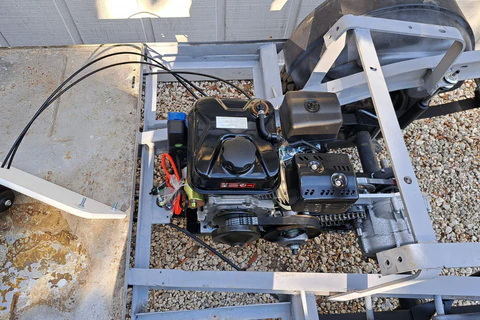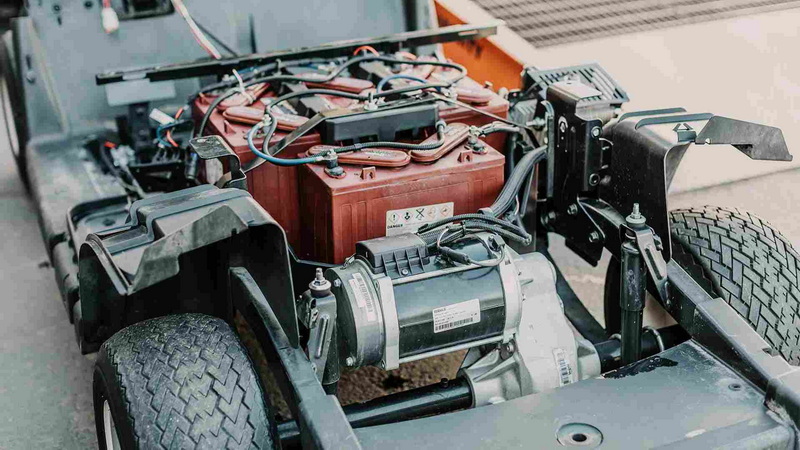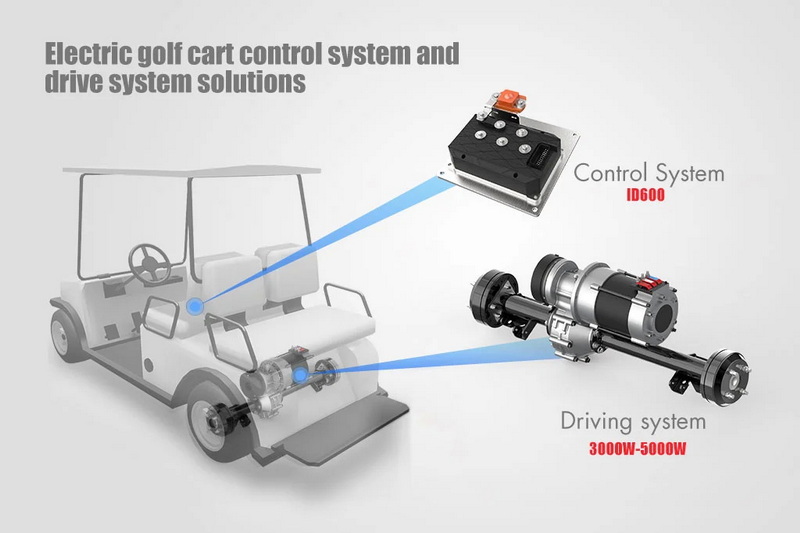Content Menu
● Understanding Electric Golf Carts
● Why Convert to Gas?
● The Conversion Process
>> Gather Necessary Components
>> Remove Electric Components
>> Install the Gas Engine
>> Modify Fuel Delivery System
>> Install Exhaust System
>> Reconfigure Electrical Systems
>> Adjust Suspension and Brakes
>> Testing and Tuning
● Safety Considerations
● Pros and Cons of Conversion
● Conclusion
● Related Questions
>> 1. What tools do I need for converting an electric golf cart to gas?
>> 2. Is it legal to convert an electric golf cart to gas?
>> 3. How much does it cost to convert an electric golf cart to gas?
>> 4. Can I do this conversion myself?
>> 5. What are some common issues faced during conversion?
Converting an electric golf cart to gas is a topic that draws interest from many golf cart enthusiasts. This process involves significant modifications and mechanical skills, as it requires replacing the electric motor with a gas engine and making various adjustments to the cart's structure and systems. In this article, we will explore the conversion process in detail, discuss the necessary components, and weigh the pros and cons of such a conversion.

Understanding Electric Golf Carts
Electric golf carts are powered by batteries, which provide energy to an electric motor. These carts are popular for their quiet operation and lower environmental impact compared to gas-powered models. However, some users may prefer the performance or convenience of gas engines, prompting them to consider conversion.
Why Convert to Gas?
There are several reasons one might consider converting an electric golf cart to gas:
- Increased Range: Gas engines typically offer a longer range compared to electric batteries, especially for extended use.
- Performance: Gas engines can provide more power and speed, making them suitable for off-road or hilly terrains.
- Fueling Convenience: Refueling a gas engine can be quicker than charging batteries, particularly in remote areas.
The Conversion Process
The conversion from electric to gas is complex and requires careful planning. Below are the general steps involved in this process:
Gather Necessary Components
Before starting the conversion, you need to gather all essential components:
- Gas Engine: Choose an engine compatible with your golf cart's frame.
- Fuel Tank: A suitable tank for storing gasoline.
- Exhaust System: To vent exhaust gases safely.
- Fuel Lines and Carburetor: For fuel delivery.
- Ignition System: Necessary for starting the engine.
Remove Electric Components
Begin by removing all electric components from the golf cart:
- Disconnect and remove the electric motor.
- Take out the battery pack and controller.
- Remove any wiring associated with the electric system.
This step may require disassembling parts of the cart, such as seats or body panels.
Install the Gas Engine
Once the electric components are removed, you can install the gas engine:
- Modify the frame if necessary to accommodate the new engine.
- Securely mount the gas engine using appropriate brackets and ensure proper alignment with the drivetrain.

Modify Fuel Delivery System
Install the fuel tank and connect it with fuel lines to the engine:
- Ensure that all connections are secure to prevent leaks.
- Install a carburetor or fuel injection system as required by your engine type.
Install Exhaust System
A proper exhaust system is crucial for venting gases produced by combustion:
- Install exhaust pipes leading from the engine to an outlet away from passengers.
- Ensure that all connections are tight to avoid leaks.
Reconfigure Electrical Systems
While most electrical components will be removed, some may still be needed:
- Reconfigure wiring for lights or other accessories that need power.
- Ensure that any remaining electrical systems are compatible with the new setup.
Adjust Suspension and Brakes
The added weight of a gas engine may require adjustments:
- Upgrade suspension components if necessary to handle increased weight.
- Ensure that brakes are adequate for stopping power at higher speeds.
Testing and Tuning
After installation, thorough testing is essential:
- Start the engine and check for any issues such as leaks or alignment problems.
- Tune the engine for optimal performance, adjusting carburetor settings as needed.

Safety Considerations
Safety is paramount during this conversion process:
- Always wear protective gear when working on mechanical systems.
- Ensure that all components are installed securely to prevent accidents during operation.
Pros and Cons of Conversion
Before deciding on this conversion, consider both advantages and disadvantages:
| Pros | Cons |
| Increased range and performance | Complex process requiring mechanical skills |
| Quicker refueling | Potentially costly |
| More power for off-road use | May void warranties on existing carts |
| Customization options | Risk of improper installation |
Conclusion
Converting an electric golf cart to gas can be a rewarding project for those with mechanical skills and knowledge. However, it is important to weigh the benefits against the complexities involved in such a conversion. For many users, purchasing a pre-existing gas-powered golf cart may be a more practical solution than attempting a conversion.

Related Questions
1. What tools do I need for converting an electric golf cart to gas?
You will need basic hand tools such as wrenches, screwdrivers, pliers, as well as specialized tools like welding equipment if frame modifications are necessary.
2. Is it legal to convert an electric golf cart to gas?
Legal requirements vary by location. It's important to check local regulations regarding modified vehicles before proceeding with conversion.
3. How much does it cost to convert an electric golf cart to gas?
Costs can vary widely based on parts used but generally range from $1,000 to $3,000 or more depending on complexity and quality of components chosen.
4. Can I do this conversion myself?
If you have mechanical experience and access to necessary tools, you can attempt this conversion yourself; however, professional assistance is recommended for safety and reliability.
5. What are some common issues faced during conversion?
Common issues include compatibility problems between parts, alignment issues with drivetrain components, and challenges in configuring electrical systems properly.











































